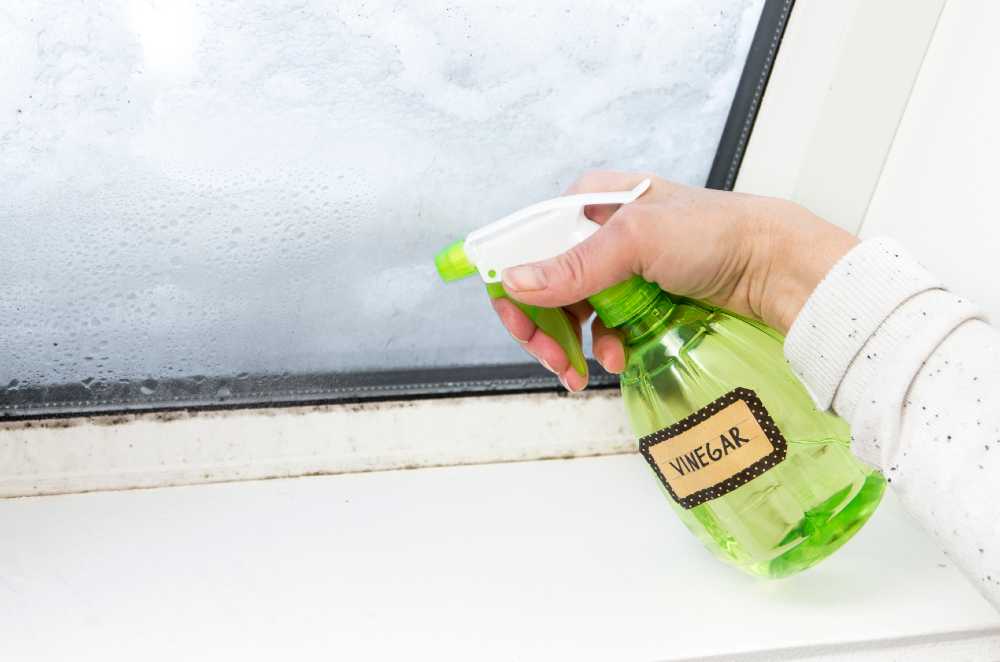Mold is a common nuisance in bathrooms, kitchens, and basements. A naturally occurring fungus, mold grows on walls, tile, flooring, and ceilings in the presence of moisture. When it comes to mold removal, many people will ask does vinegar kill mold? Vinegar will kill mold, but mold is actually a symptom of moisture. If you don’t address the moisture, mold will eventually return. We look at how to kill mold with vinegar and what to do if it keeps coming back.
How To Kill Mold With Vinegar
It’s actually very easy to kill mold with vinegar. In most cases, all you need is vinegar, a spray bottle, and a clean rag. For stubborn sections of mold, you may need to use a scrub brush.
- Fill A Spray Bottle With Vinegar – Add vinegar directly to a spray bottle without diluting it.
- Spray Vinegar Directly On The Mold – Spray the vinegar on any surface that has mold and allow it to sit for 15 to 30 minutes.
- Wipe The Area Clean With A Rag – Use the rag to gently wipe the area clean.
This method is effective for small sections with mold. In some cases, you may need to repeat the process a few times to completely kill the mold on the surface.
If the mold remains after several cleanings with vinegar, use a soft-bristled scrub brush to gently remove it. Avoid scrubbing too hard, as you can wear away paint on walls or damage the finish on woodwork.
Although vinegar does kill mold, the moisture is actually the problem. If mold continues to appear in the same area, you need to find and fix the problem. Otherwise, the mold will continue to return.
Over time, the mold will start to breakdown the material. This may cause flooring, walls, carpeting, cabinets, and ceilings to crumble or deteriorate.
Additionally, it may cause allergy-like symptoms like dry, itchy eyes, congestion, and sneezing. Those with weakened immune systems or respiratory conditions may experience more severe symptoms.
What Kind Of Vinegar Kills Mold
Technically, all kinds of vinegar will kill mold. However, you probably don’t want to use your expensive balsamic vinegar or flavorful cooking vinegar. Not only are they more expensive, but the colors can stains walls and other surfaces. It’s best to use regular distilled white vinegar because it’s inexpensive, colorless, and has a relatively neutral smell.
When You Need Mold Removal Services
You should contact a mold removal company if you have extensive mold issues. This includes sections larger than 2 feet square, if there is a major leak or water issue, or when vinegar stops being effective at controlling the problem.
A mold removal technician will access the situation and determine the necessary steps to remove the mold permanently. This usually includes repairing the water problem and removing materials contaminated with mold.
The Mold Removal Process
Although the process does vary depending on your circumstances, the following steps apply in most situations.
- Find And Fix The Moisture Issue – Fix the moisture problem that causes the mold.
- Remove Contaminated Materials – Remove and dispose of materials contaminated by mold.
- Disinfect And Deodorize The Area – Chemically disinfect and deodorize the area to kill mold
- Restore Your Home – Rebuild the affected area, returning it to the original condition.
If vinegar isn’t enough to kill your mold problem, Restoration Local is here to help. Call 1-888-443-3110 now to get a free estimate from our on-call mold removal specialist near you.





